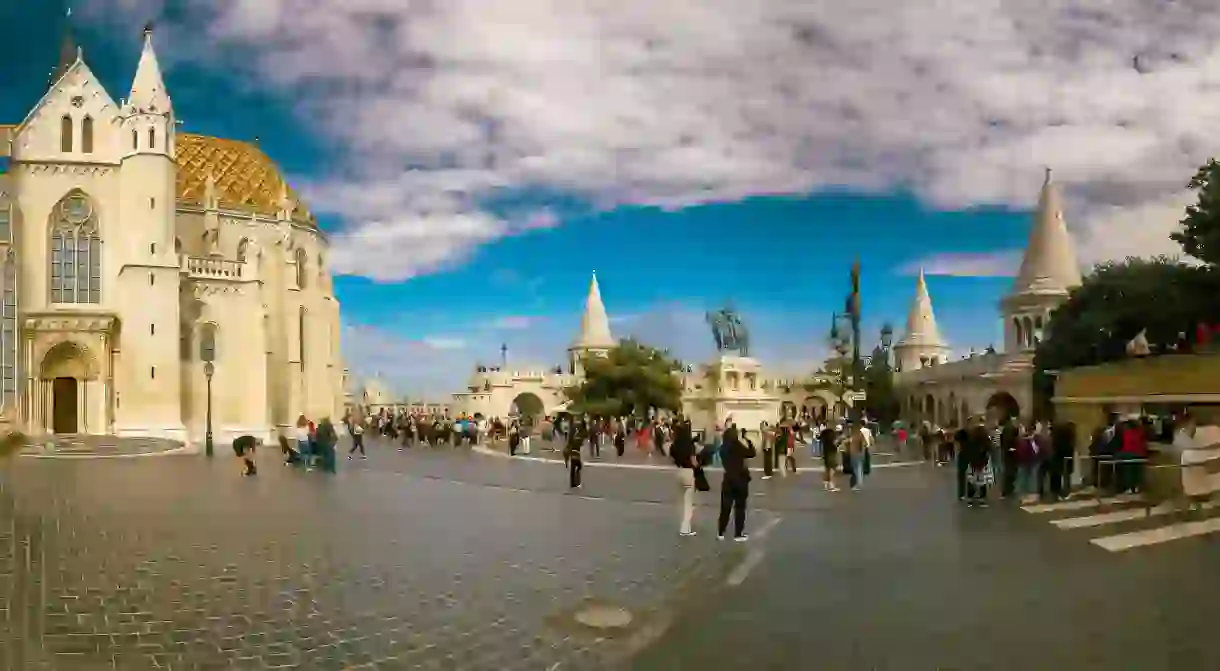10 Awesome Things to Do in Buda, Budapest

Buda and Pest, the two cities that make up Hungary’s capital today, were only joined in 1873. Before that, they developed relatively independently of each other, giving them distinct atmospheres. Hilly Buda, in the west, offers panoramas and imperial grandeur; Pest, while vibrant, is completely flat but full of hip bars and restaurants. Read on for our selection of the top 10 things to do in Buda.
Fisherman’s Bastion
Historical Landmark, Building

Buda Castle
Historical Landmark

Matthias Church
Church, Architectural Landmark, Historical Landmark

In 1867, Franz Joseph I of Hungary was crowned in this 14th-century church, thus marking the beginning of the Austro-Hungarian Empire. In addition to being the site of such an important historical event, Matthias Church is an incredibly beautiful monument with a rich and fascinating history – it was even a mosque at one point! It was built in typical Gothic style and incorporates beautiful ceramic tiles from the renowned Zsolnay factory. Inside, there is an underground gallery containing relics, medieval stone carvings and replicas of the Hungarian crown and coronation jewels.
Explore Buda’s caves
Natural Feature
The caves underneath Buda provide an insight into Budapest’s history, as well as a way to keep cool on a hot summer day! In addition to the so-called ‘Castle Labyrinth’ underneath Buda Castle, two natural caves can easily be visited: Szemlgőhegyi and Pálvölgyi. The latter’s stunning stalactite and stalagmite formations are very rewarding. and looking around the relatively small area accessible to the public is exerting enough to feel like an adventure. Szemlgőhegyi, on the other hand, is easier to explore and features some lovely walls lined with crystals and minerals.
Tabán
Park
Tucked between Gellert Hill and Castle Hill lies the residential streets and beautiful parks of the Taban, a formerly bohemian district unfortunately demolished in the 1930s. Today, it is far less vibrant and exciting, but the busy streets have given way to delightful large parks where visitors and locals can stroll or relax. It is still filled with bars and restaurants, so there’s a little bit of everything in the Taban, even though it’s not as trendy as Pest’s seventh district.
Buda’s Turkish Baths
Spa

Budapest is famously a city of many thermal baths, and naturally, some of them lie on the Buda side of the city. Generally, because of the two banks’ different atmosphere, the baths in Buda tend to be more upscale and luxurious, while those in Pest are more popular. In Buda, then, visitors will find the beautiful Gellért Spa, famous for its Art Nouveau entrance hall, and the Ottoman-built Rudas Baths, Budapest’s oldest thermal baths.
Wolf’s Meadow cemetery
Cemetery

Tomb of Gül Baba
Cemetery
A lesser-known spot in Buda, the Tomb of Gül Baba is one of the last-remaining reminders of Budapest’s Ottoman past. Gül Baba was a poet and a soldier in the army of sultan Suleiman I. He came to Hungary in 1541, and is thought to have died either during the religious ceremony after the Ottoman victory in 1541 or while fighting. Whatever the circumstances of his death may be, his beautiful octagonal tomb and the nearby mosque have become a pilgrimage destination. There’s also a garden, which is splendid when the roses are in bloom.
Climb Gellért Hill
Historical Landmark, Natural Feature

Memento Park
Museum, Park














